Aspirin Allergy and Its Relationship to Allergies and Asthma
 Aspirin-Exacerbated Respiratory Disease (AERD) is an acquired condition in which the sensitivity to aspirin and/or related drugs (e.g., nonsteroidal anti-inflammatory drugs or NSAID’s) is associated with long term inflammation of the upper and lower airways.
Aspirin-Exacerbated Respiratory Disease (AERD) is an acquired condition in which the sensitivity to aspirin and/or related drugs (e.g., nonsteroidal anti-inflammatory drugs or NSAID’s) is associated with long term inflammation of the upper and lower airways.
How common is AERD?
Approximately 8% of the adults in the U.S. are asthmatics and 9% of those individuals have AERD. About 13% of U.S. adults have chronic nasal and/or sinus disease and 15% of those have AERD.
AERD is a clinical syndrome consisting of:
1. Growth of polyps inside the nose
2. Chronic sinus inflammation and/or recurrent sinus infections
3. Persistent asthma, which is often difficult to control
4. Allergic sensitization to aspirin and/or other nonsteroidal anti-inflammatory drugs (NSAID’s)
What causes AERD?
Although the exact cause remains unknown, a disorder in the metabolism or breakdown of a chemical called arachidonic acid is at the root of the condition. Aspirin is not the cause of the disorder, but in sensitive individuals, ingestion of aspirin will aggravate the underlying respiratory symptoms, probably by increasing the levels of inflammatory chemical mediators called leukotrienes. This process also leads to the accumulation of excessive numbers of eosinophils (i.e., “the allergy white blood cell”) in the respiratory tract.
Clinical Features:
1. Severe nasal congestion
2. Overgrowth of polyps in the nose, which typically recur after surgical removal
3. Decreased sense of taste and/or smell
4. Facial pressure and pain
5. Frequent headaches
6. Moderate to severe asthma causing wheezing, coughing, chest tightness and/or shortness of breath
7. Fatigue caused by sleep deprivation
8. Significant opacification of the sinuses seen in X-rays and CT scans of the sinuses
Diagnosis:
The diagnosis is suspected when there is a history of an exacerbation of one’s asthma following ingestion of aspirin and/or NSAID’s. The diagnosis is confirmed if the symptoms are induced or aggravated during an oral aspirin challenge, where incremental doses of aspirin are administered by mouth under the close monitoring by a board certified allergist.
Treatment Options:
Complete avoidance of aspirin and other salicylates (e.g.,diflunisal (Dolobid); salsalate (Disalcid), as well as other related NSAID medications called COX-1 inhibitors (e.g., all NSAID’s except celecoxib) will help some patients attain better control of their symptoms. For some individuals, however, these medications can be substituted for other similar NSAID pain relievers called COX-2 inhibitors [e.g., celecoxib (Celebrex)] without adverse effects. Note that Celebrex (celecoxib) is currently the only approved COX-2 inhibitor NSAID in the U.S. Some, but not all, of the common available NSAID’s which are COX-1 inhibitors include [e.g., ibuprofen (Motrin, Advil); naproxen (Aleve, Anaprox); fenoprofen (Nalfon); flurbiprofen (Ansaid); ketorolac (Toradol); diclofenac (Voltaren, Arthrotec); etodolac (Lodine); sulindac (Clinoril); oxaprozin (Daypro); indomethacin (Indocin); tolmetin (Tolectin); nabumetone (Relafen); piroxicam (Feldene); meloxicam (Mobic)]. Avoidance of aspirin is not always possible due to the need for aspirin in the management of heart, blood vessel, and joint diseases. In addition, even with the avoidance of aspirin and NSAID’s, AERD patients usually experience progressive airways disease, despite aggressive surgical intervention and/or topical or systemic anti-inflammatory treatment with corticosteroids and leukotriene antagonists like montelukast (Singulair), zafirlukast (Accolate), and zileutin (Zyflo).
For these individuals that need to be treated with aspirin, aspirin desensitization followed by regular long term intake of aspirin is an alternative option. Multiple studies have shown that desensitization and daily treatment with aspirin can significantly improve overall symptoms and quality of life, decrease formation of nasal polyps and sinus infections, reduce the need for oral corticosteroids and sinus surgery, and improve nasal and asthma scores in patient with AERD. Significant clinical improvement is seen in as little as 4 weeks after treatment.
The procedure for aspirin desensitization involves administering aspirin by mouth in gradually increasing doses at regular intervals, while closely monitoring for adverse effects in a controlled setting such as an allergy office. The process can take 1 to 2 days.
There is a potential for adverse reactions during the procedure like nasal congestion, generalized itching (pruritus), hives (urticaria), swelling of the soft tissues (angioedema), wheezing, breathing difficulty, drop of blood pressure, and/or anaphylaxis. In case of a minor adverse reaction, they may be treated with medications. After observation for about 3 hours, the last dose can be repeated. Many individuals will be able to successfully finish the procedure in spite of some untoward reactions. Pre-treatment with leukotriene antagonists (e.g., montelukast) play a role in minimizing the risk of reactions during the desensitization procedure.
Aspirin desensitization reduces nasal congestion and nasal polyp formation, improves respiratory symptoms, reduces the need for surgery, and decreases the need for ongoing medications. The board certified allergists at Black & Kletz Allergy have had over 50 years of experience with patients who have aspirin sensitivity. Desensitization in patients who are sensitive to aspirin can be done in any of our 3 office locations in the Washington, DC, Northern Virginia, and Maryland metropolitan area. Black & Kletz Allergy has offices in Washington, DC, McLean, VA (Tysons Corner, VA), and Manassas, VA. We offer on-site parking at all of our offices and the Washington, DC and McLean, VA offices are Metro accessible. There is a free shuttle that transports patients between our McLean, VA office and the Spring Hill metro station on the silver line. For an appointment, please call us or alternatively, you can click Request an Appointment and we will respond within 24 hours by the next business day. Black & Kletz Allergy treats both adults and children suffering from all types of allergies (i.e., hay fever, food, medication, insect stings), asthma, sinus problems, hives, swelling episodes, eczema, and immunologic disorders. We strive to provide exceptional quality allergy and asthma care to the Washington, DC metro community in a friendly and professional setting.

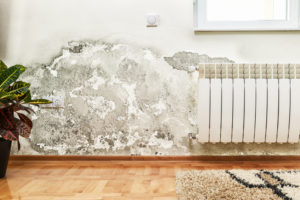
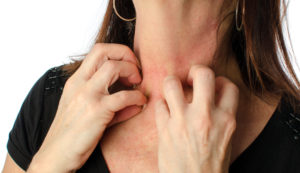 Everyone has had an itch here or there, but as an allergist Washington DC patients rely on might attest, generalized itching (itching all over the body) does not occur in everyone.
Everyone has had an itch here or there, but as an allergist Washington DC patients rely on might attest, generalized itching (itching all over the body) does not occur in everyone. 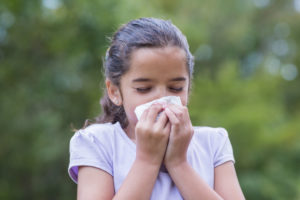 The Allergists Tysons Corner VA Trust Explain the Effects of Climate Change on Your Allergies
The Allergists Tysons Corner VA Trust Explain the Effects of Climate Change on Your Allergies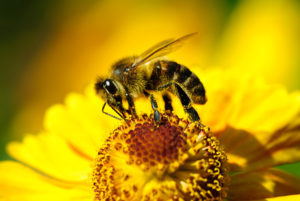 From Allergy Doctors Vienna VA Patients Trust
From Allergy Doctors Vienna VA Patients Trust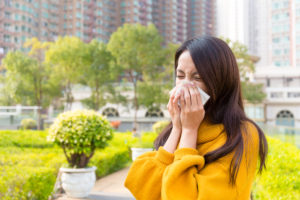 There has been an increase in the incidence of allergic diseases over the past 20-30 years and this phenomenon is more pronounced in industrialized countries compared to developing countries. Many researchers believe that environmental and dietary changes play major roles in the development of allergies. This is true in areas such as Falls Church, VA, Gainesville, VA, and Tysons Corner, VA as well as the rest of the Washington, DC metro area.
There has been an increase in the incidence of allergic diseases over the past 20-30 years and this phenomenon is more pronounced in industrialized countries compared to developing countries. Many researchers believe that environmental and dietary changes play major roles in the development of allergies. This is true in areas such as Falls Church, VA, Gainesville, VA, and Tysons Corner, VA as well as the rest of the Washington, DC metro area. The Washington, DC, Northern, Virginia, and Maryland metropolitan area has its share of pollutants in its air as well as the many allergens that are known to be prevalent. The allergens that are common in the DC metro area include tree and grass pollens in the Spring, ragweed pollen in the Fall, and mold spores which are perennial in nature. The molds are year-round due to the history of Washington, DC being a swamp many years ago. The humidity also tends to be high in the area, which favors the growth of molds. Regarding pollutants, there are many different types of pollutants in the Washington, DC metropolitan area including such cities as Gainesville, VA, Falls Church, VA, and Tysons Corner, VA.. Some of these pollutants include carbon monoxide, ozone, organic dusts and other fine particulate matter, nitrogen dioxide, sulfur dioxide, and lead emissions.
The Washington, DC, Northern, Virginia, and Maryland metropolitan area has its share of pollutants in its air as well as the many allergens that are known to be prevalent. The allergens that are common in the DC metro area include tree and grass pollens in the Spring, ragweed pollen in the Fall, and mold spores which are perennial in nature. The molds are year-round due to the history of Washington, DC being a swamp many years ago. The humidity also tends to be high in the area, which favors the growth of molds. Regarding pollutants, there are many different types of pollutants in the Washington, DC metropolitan area including such cities as Gainesville, VA, Falls Church, VA, and Tysons Corner, VA.. Some of these pollutants include carbon monoxide, ozone, organic dusts and other fine particulate matter, nitrogen dioxide, sulfur dioxide, and lead emissions. As allergists that Gainesville, VA calls upon, we know that when one thinks about allergies and allergy symptoms, dental problems usually do not come to mind. In fact, most people tend to separate dental and medical problems into two distinct categories. Medical diseases can and do influence your dental health. Most people know that certain heart defects and murmurs may require premedication with antibiotics in order to prevent subacute bacterial endocarditis. Patients with GERD (gastroesophageal reflux disease), Sjögren’s syndrome, anorexia, and bulimia are more prone to cavities of the teeth. There are many more medical conditions which can have profound implications on the health of one’s teeth which will not be discussed.
As allergists that Gainesville, VA calls upon, we know that when one thinks about allergies and allergy symptoms, dental problems usually do not come to mind. In fact, most people tend to separate dental and medical problems into two distinct categories. Medical diseases can and do influence your dental health. Most people know that certain heart defects and murmurs may require premedication with antibiotics in order to prevent subacute bacterial endocarditis. Patients with GERD (gastroesophageal reflux disease), Sjögren’s syndrome, anorexia, and bulimia are more prone to cavities of the teeth. There are many more medical conditions which can have profound implications on the health of one’s teeth which will not be discussed.